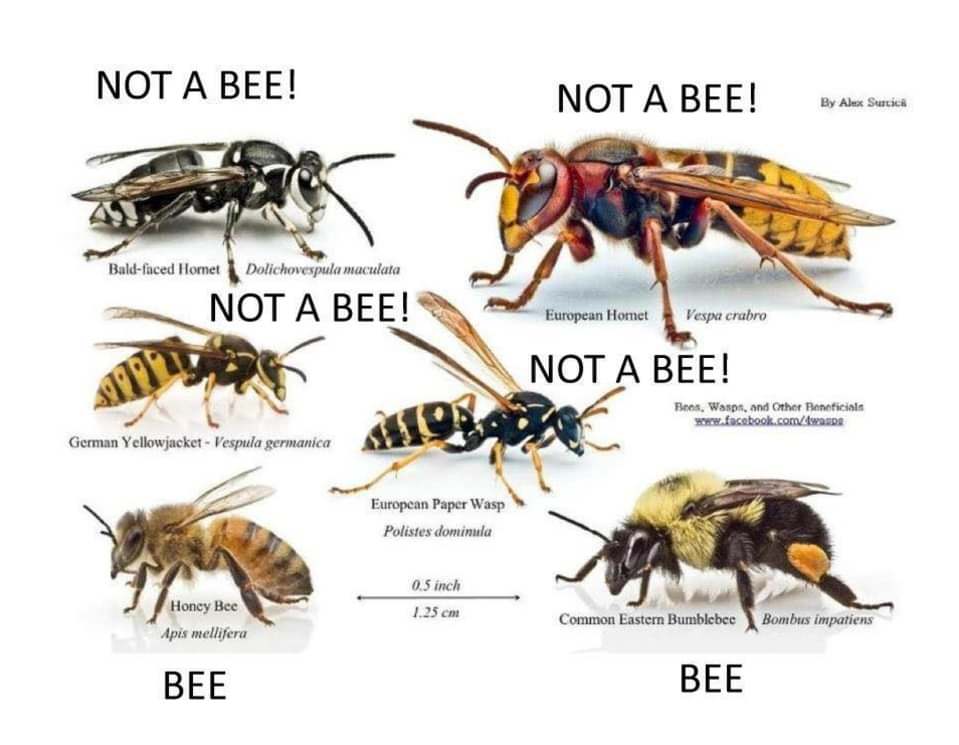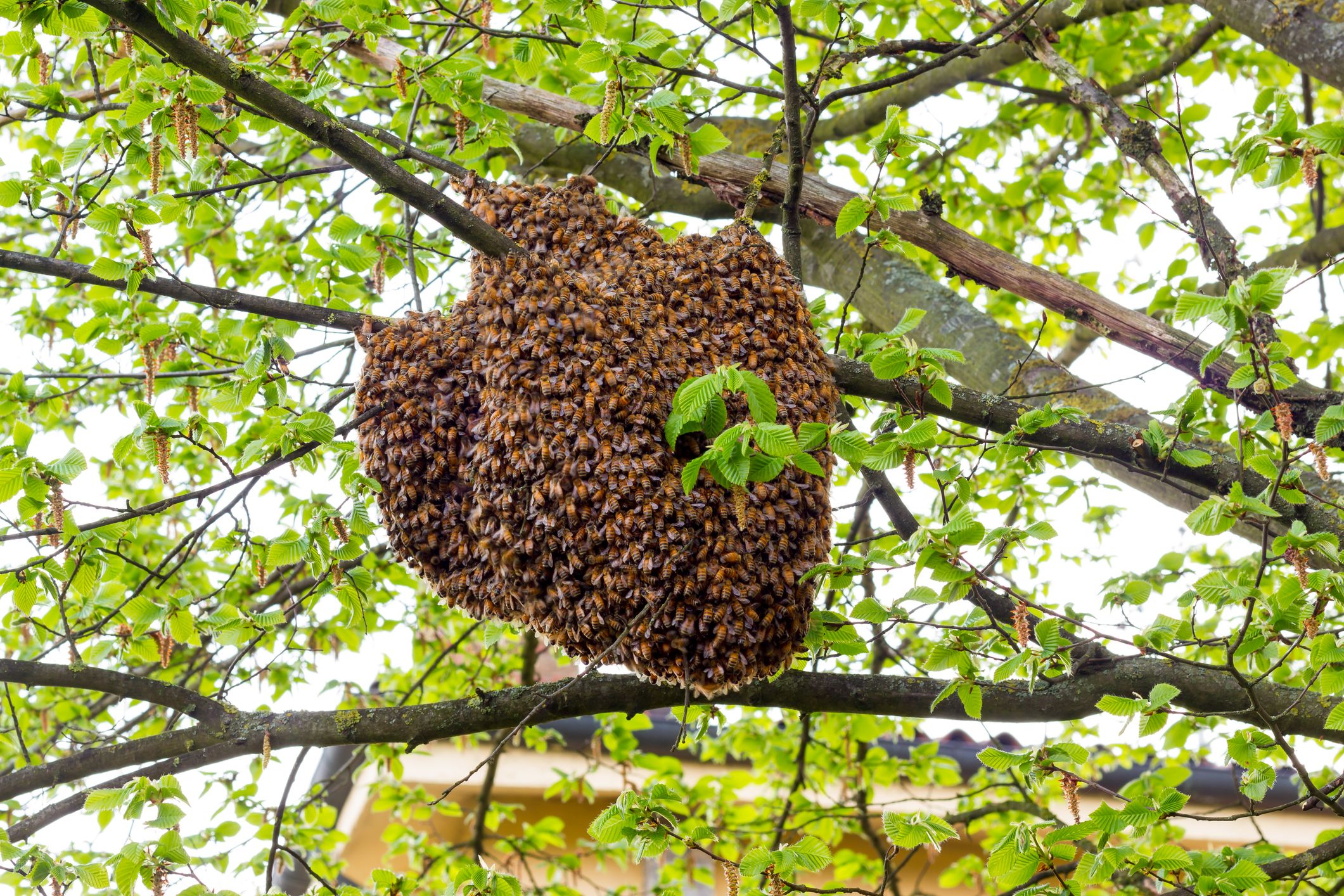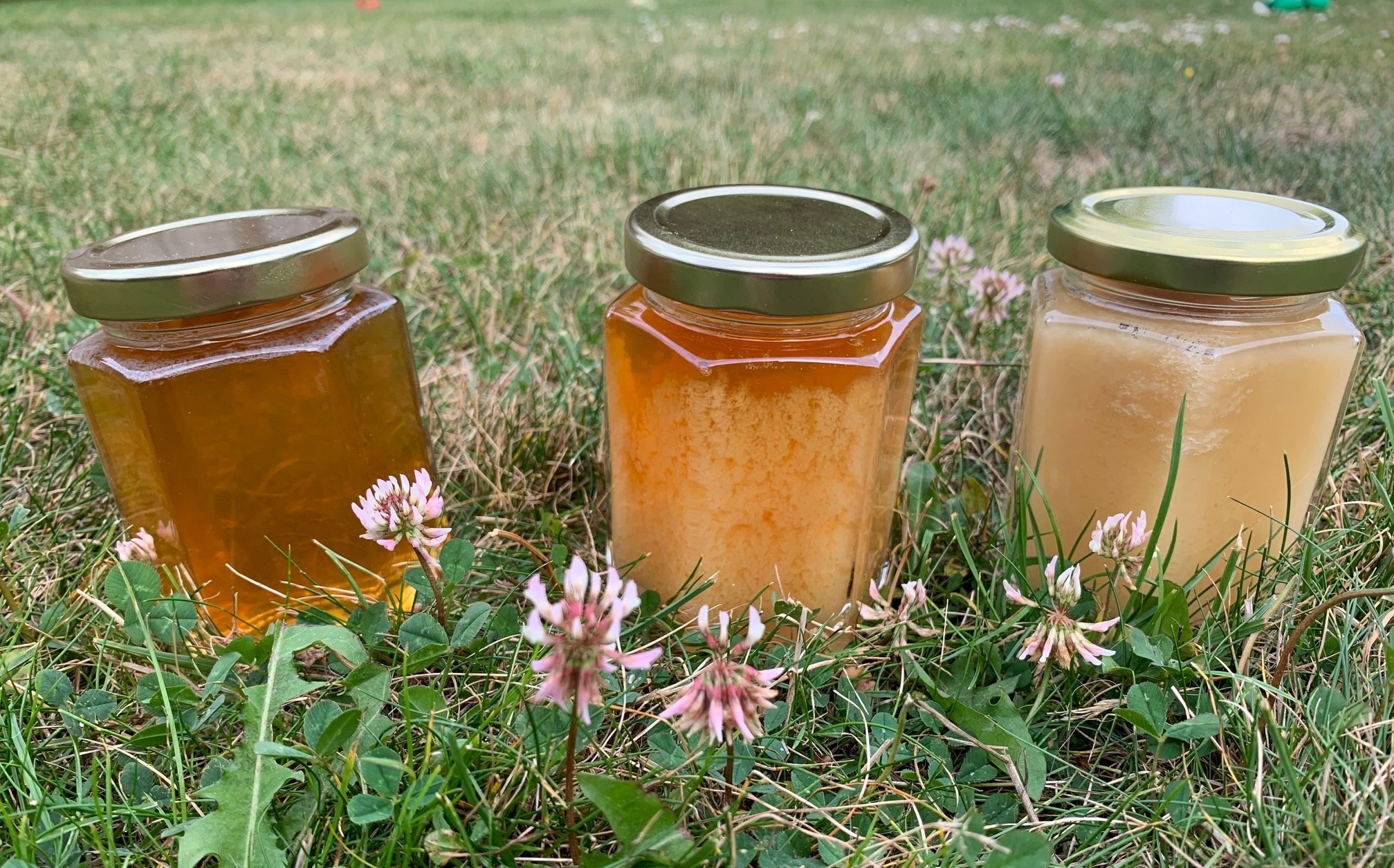r/Beekeeping Wiki
Frequently Asked Questions: Non-Beekeepers
Got a question? Well we’ve got the answer… maybe
- Is this a honey bee?
- Are these honey bees in my house?
- Should I have these bees removed?
- Is this a swarm?
- Who should I contact about a swarm?
- I got stung, what should I do about it?
- Is this a queen?
- How should I help this bee?
- What happened to my honey?
- What’s this black / white stuff in my honey?
- Is my honey mouldy?
- Is my honey authentic
Is this a honey bee?
That’s a good question! There are tens of thousands of varieties of bee across the globe. Only two (give or take) of them are honey bee. If it’s digging a hole, or living in a very small hole, it’s probably not a honey bee but a leaf cutter or mason bee… both of which are insanely interesting in their own right.
See the question below for some lovely pictures.
Are these honey bees in my house?
- Is there a hole in your wall?
- Are there insects coming and going from this hole pretty much all the time?
- Are they carrying pollen? (little colored pads stuck to their legs)
- Do these insects look a little fuzzy?
If you answered yes to all of these questions, you likely have a problem… A bee problem.
If they are in your house, you need to read this question.
These infographics might help you figure out if your “bees” are Bees.


Should I get these bees removed?
Are they in your house? If yes, the answer is yes, by a professional… If you kill them other pests will move in and cause havoc, and you will have old stinky comb and honey leaking through your walls, and mice and rats eating it.
Are they in your house? If no, the answer is no … leave them alone unless they are bothering you. You can kill them, but just be aware that you will need to thoroughly seal the colony in once they are dead otherwise you will cause ecological carnage with the transmission of pesticides (Honey bees aren’t endangered in any way).
Is this a swarm?
If you can see a big black ball of bees dangling from a tree, it is most definitely a swarm. A swarm of bees will look like the below. When they are in flight, there will be an enormous cloud of bees in the air. Everywhere you look, you will be able to see a bee.

Also, see the next question…
Who should I contact about a swarm?
There are two primary contact points for collecting swarms for the USA:
BeeSwarmed (created by one of our very own community members) is a little more easy to use and you don’t need to go finding the collector yourself. It will find one for you, where it can. However, both of these offer a comprehensive list of swarm removers.
If you’re in the UK or elsewhere in europe, please google your region followed by “beekeeping association”, such as birmingham beekeeping association. Each beekeeping association has it’s own list of approved swarm collectors that you can contact in different ways. If the local association doesn’t do collections, you can look at the BBKA swarm collection website
I got stung, what should I do about it?
We aren’t able to tell you what to do about your stings.
You should never ever go on the internet looking for medical advice from unverified strangers if you value your state of being. If you are concerned for your health, you should seek the advice of certified and approved websites, or speak to a medical professional. Please do not come to the subreddit asking for medical advice - your post will be removed.
Is this a queen?
Probably not. Queens only fly on their own a handful of times over the space of a few days for their entire life. They perform what are called “mating flights”, and after that, they are forever to live with the colony. The only time they will leave a hive after that is to swarm.
If you are absolutely certain that it’s a queen, it won’t be in your microwave… It’ll probbaly be dead or dying. Sometimes queens get caught out by birds on their mating flights, however this is exceedingly rare and if you aren’t a beekeper or attend any events where beekeepers might be, you’ll probably never see a queen bee in your entire life.
How should I help this bee?
Don’t!
We understand your empathy and sympathy for the dying insect, but stop trying to help it and put it back outside! Bees have an insanely good sense of navigation; if it’s not dying, by taking it inside you are interrupting her performing her role. She might just be resting. Bees rest. Also, bees often leave their hive to die to prevent pests finding and ravaging the colony. If she flew away to die, she doesn’t need or want your help. Leave her alone. In nature, things die and get repurposed.
Stop trying to help individual bees. Just leave them to it.
If you really want to help, read our page on helping native pollinators
What happened to my honey?

If it has gone hard, or there is a layer of lighter colored honey at the bottom, and liquid on top - it has granulated.
Granulation is a perfectly normal and expected aspect of honey. Honey is a super saturated solution of sugar in water. At some point the sugars start to fall out of solution and crystalise. It is meaningless in terms of determining it’s authenticity or adulteration - all honey granulates, adulterated or not.
If you wish to un-granulate your honey, run a bowl of warm-to-hot water (not hot enough that it burns), and stand the honey vessel in it. It should return back to runny after some time. Pre warning though - it will granulate all over again.
Granulation can, in some cases, lead to fermentation. Where solution falls out of the water, the water becomes less saturated with sugar. This can lead to a hospitable environment for yeast and can ferment quite readily - though, this is rare. See Is my honey mouldy? for more information
What’s this black / white stuff in my honey?

Black? Probably pollen.. probably. It might be parts of bees or bits of propolis. All of which are edible. You can either strain it through a sieve or just worry less and eat it… it’s very unlikely to do you any harm. See Is my honey mouldy? for further information on why.
White? Tiny bubbles? looks like the head of a good beer? That’s foam. It’s normal. During extraction, tiny tiny bubbles accumilate in the honey as it’s being span from the frames. These bubbles take ages to come to the surface, so sometimes if it’s bottled a little too soon, you get… foam. It’s edible… and it’s just air. Sometimes foam can lift more of the pollen and tiny extra bits to the surface making it look a bit funny. It’s not a problem. Eat the damn honey. :)
Is my honey mouldy?
No. Not if it’s real honey, and it’s stored in an air tight container… it’s not mouldy.
Not unless you stored it in a jar that wasn’t air tight. Honey attracts water, so if it’s not airtight, it will absorb moisture from the environment and begin to ferment. Fermenting honey initially smells like bread, but at later stages can start to smell like alcohol and develop some very very funky scents.
“Real” honey has a moisture content below 18% (depending on the nectar source). If it’s any higher, the risk of fermentation increases. If you have your honey in an airtight container and it has fermented, get your money back… that honey wasn’t honey.
Due to the concentration of sugar in honey, it makes it very inhospitable to microbial life outside of yeast. Honey quite simply doesn’t go mouldy.
Is my honey authentic?
There’s no way to tell. We know what the videos on tiktok say, but there are no at-home tests that you can perform to check if your honey is adulterated. But if you want to get as close as possible to unadulterated honey, buy from a local beekeeper. It’s very likely that you’ll find the honey is the best you’ve ever tasted.